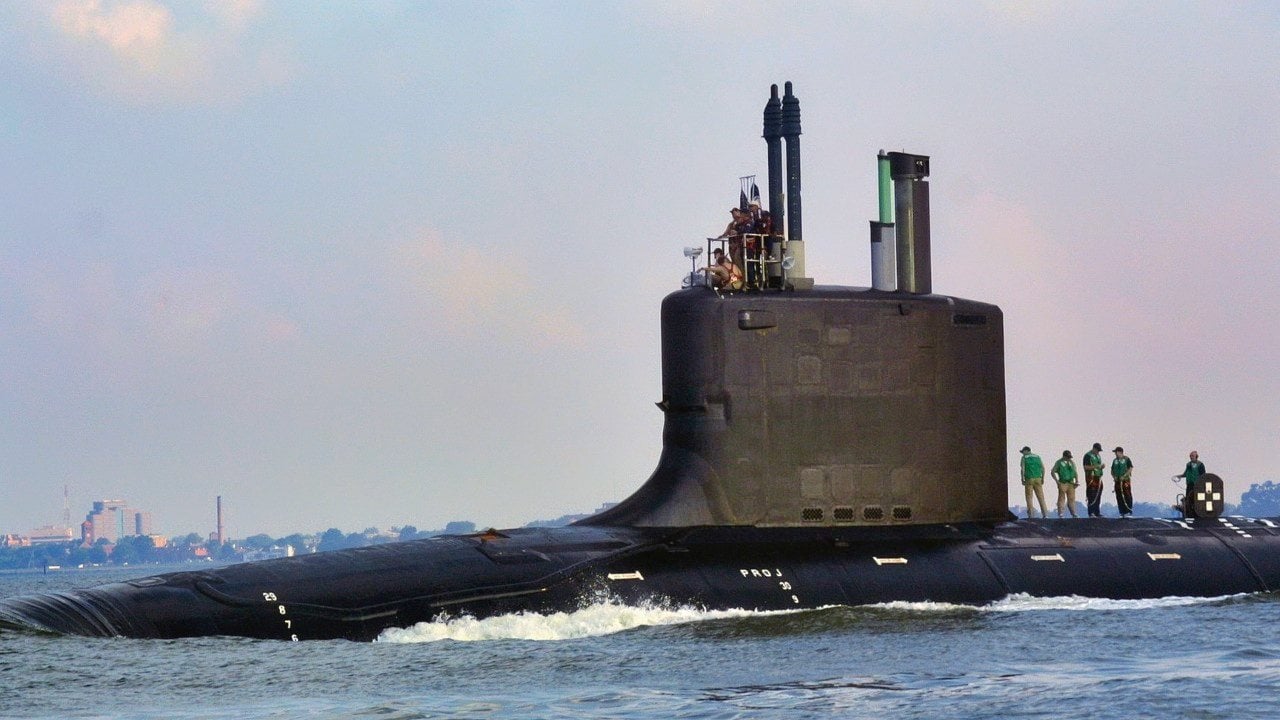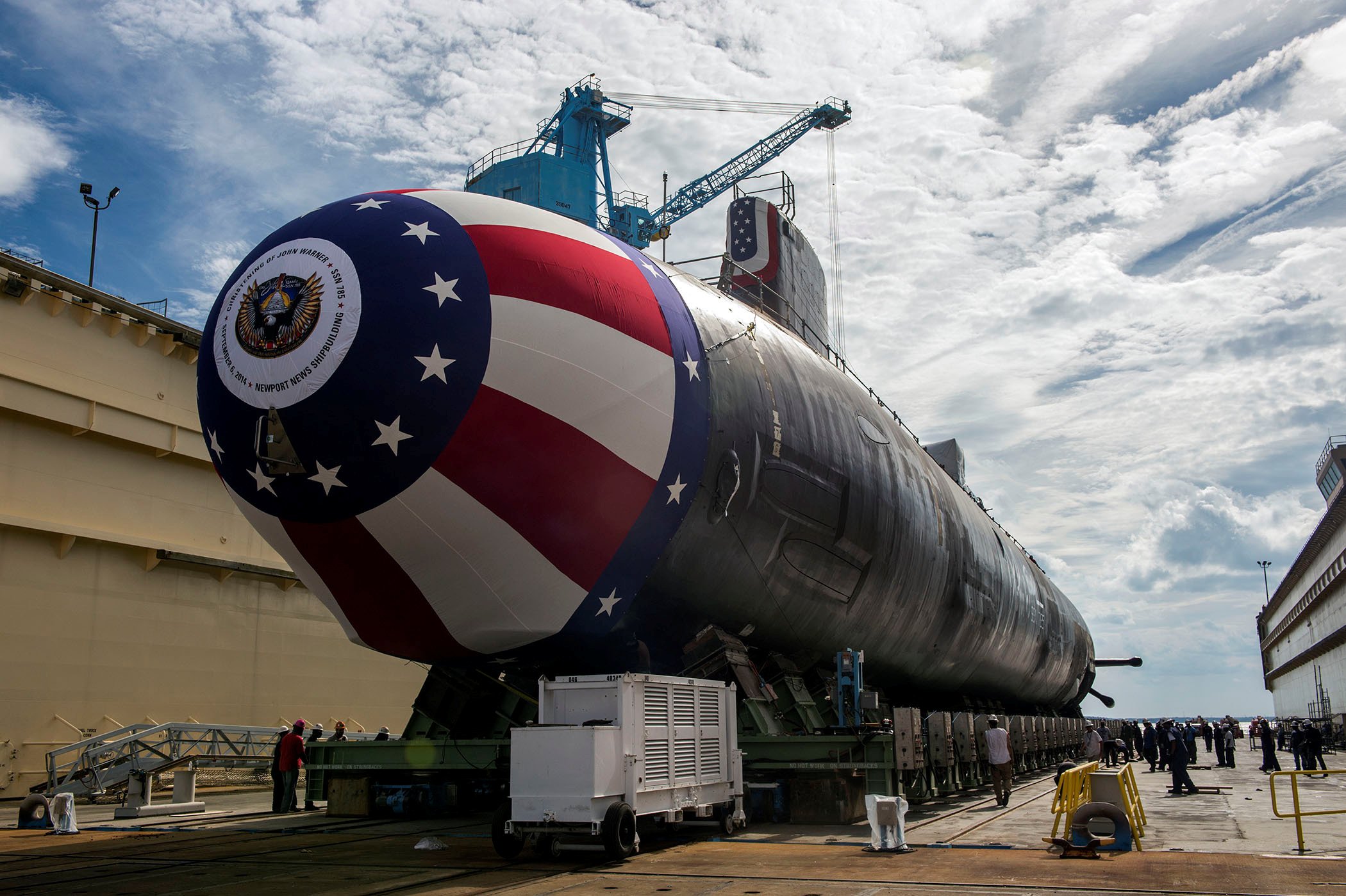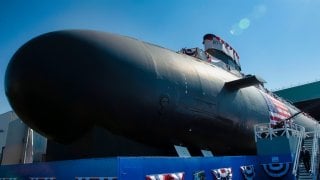The U.S. Navy's Submarine Nightmare Won't Be Easy to End
The U.S. Navy is delaying the construction of its next-generation SSN(X) attack submarine to the 2040s, citing budget constraints and a strained defense industrial base.
Summary: The U.S. Navy is delaying the construction of its next-generation SSN(X) attack submarine to the 2040s, citing budget constraints and a strained defense industrial base.

-This decision comes alongside cuts to the Virginia-class submarine program, which is already in dire need of increased numbers.
-The Block V Virginia-class, a highly advanced and capable submarine, is argued to be sufficient for current and near-future conflicts, particularly in the challenging littoral zones near China.
-Critics suggest that the Navy should focus on enhancing and expanding its existing Virginia-class fleet rather than investing in the expensive and long-term SSN(X) program, which is seen as less relevant to imminent threats.
The United States Navy is delaying the construction of their next-generation attack submarine. Way back in 2014, the Navy first confirmed that it was working on the SSN(X) stealth attack-class submarine. This was planned as a successor to the Navy’s Virginia-class attack submarine (which is still fairly early in its life cycle).
In 2021, the Navy’s original plan was to begin building the new attack sub in 2031. That then got pushed back to 2035. Now, as the Navy prepares for a future of constrained budgets and a stretched defense industrial base—with deteriorating shipyards, to boot—the Navy is pushing back this new stealth sub to the 2040s.
Of course, it isn’t only the new SSN(X) stealth attack submarine that is getting a short shrift. The current next-generation attack submarine, the Virginia-class, which is desperately needed in far greater numbers, has been cut year-by-year. Citing budget constraints, the Navy cut its request the build new Virginia-class submarines for fiscal year 2025 from two units to just one.
So, forget about the glamorous SSN(X).
The Navy is making all the wrong choices when it comes to preparing itself for the next round of great power conflict at sea.
What’s Wrong the Virginia-Class Block V?
For many, the most recent upgraded version of the Virginia-class attack submarine which has been around since 1998—the Block V variant—is the pinnacle of submarine technology. Many, like this author, question the Navy’s definition of “modernization” if it basically seeks to reinvent the wheel.
Why not just keep augmenting the Virginia-class submarines, as was done to create the Block V, until the 2040s? Wouldn’t that be cheaper?
After all, the Block V version of the Virginia-class attack sub is unlike anything else that’s in the water today. Sure, China is developing its own versions. But America still retains technical supremacy over China’s submarine fleet. And the Block V is a key element behind America’s submarine supremacy.
In the case of the Block V Virginia-class versus the SSN(X) prototype, the Navy argues that the SSN(X) is vastly different from the Virginia-class Block V model. My old colleagues at the Congressional Research Service assess that the SSN(X) will, “incorporate the speed and payload of the Navy’s fast and heavily armed Seawolf (SSN-21) class SSN design, the acoustic quietness and sensors of the Virginia-class design, and the operational availability and service life of the Columbia design.”
Whereas the Virginia-class subs were designed in an era where “multi-mission dominance in the littoral” zones of enemy territory were necessary, according to my colleague Maya Carlin. From the 2020s on, however, most naval experts believe that US submarines will be increasingly challenged by near-peer navies undersea. Evoking Carlin’s assessment again, the new SSN(X) will “carry a greater array of payloads and will be able to perform multi-mission functions with a ‘renewed priority’ in antisubmarine warfare (ASW) mission against threats in large numbers.”
Of course, this is all just posturing and theorizing.
What we know for sure is that the Block V will do just fine for the United States—even in the era of increased challenges from near peer rivals, such as China. That’s because the kind of warfare that will likely occur whenever the Sino-American conflict erupts will be waged much closer to the littorals of Asian states than they will be fought in the deep blue sea, where the US Navy still dominates…and where China would not be foolish enough to fight.
No, US submarines will be essential for rolling back a Chinese invasion, or naval blockade, of Taiwan. That will mean operating in the notoriously shallow and difficult South China Sea as well as the tight spaces of the Taiwan Strait. So, a submarine more capable in shallower waters, that can get closer to shore, is preferable for the mission at hand than any theorized great power war in the 2040s or 2050s.
The Navy Needs to Stop Fantasizing About Future War & Focus on the Current War
The Navy, however, cannot help itself. The fantasists in the bureaucracy want to build systems for some future conflict that has yet to materialize; a conflict that is basically a repeat of the Second World War with slightly better technology and with mostly different actors.

But this is flawed thinking. And it certainly is not strategic.
If there is to be a war with China over Taiwan, it will likely be fought between now and 2025. Therefore, the Navy needs to shelve its plans for the expensive SSN(X) and redirect its precious funds into building more Block Virginia-class submarines and maybe modernizing the existing batch of Los Angeles-class submarines, too. It will be the current crop of US submarines, not some fantastical prototype, that will decide the outcome of the undersea war.

About the Author
Brandon J. Weichert is a former Congressional staffer and geopolitical analyst who is a contributor at The Washington Times, as well as at American Greatness and the Asia Times. He is the author of Winning Space: How America Remains a Superpower (Republic Book Publishers), Biohacked: China’s Race to Control Life, and The Shadow War: Iran’s Quest for Supremacy. Weichert can be followed via Twitter @WeTheBrandon.
Image Credit: Creative Commons.


